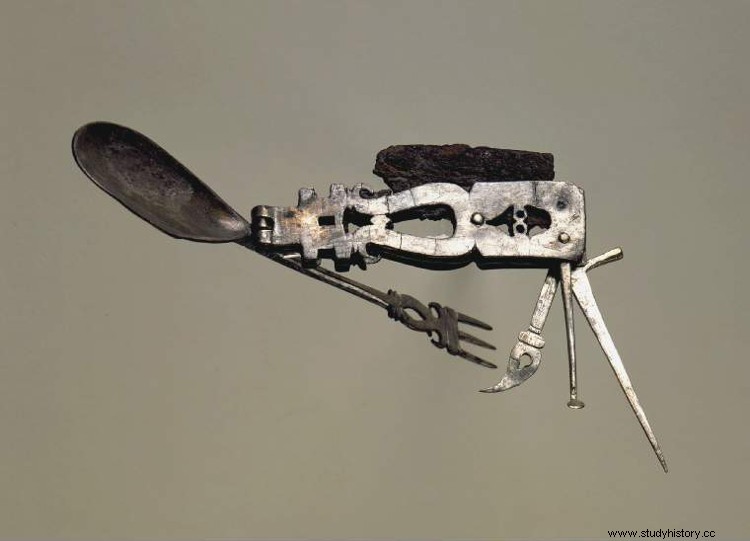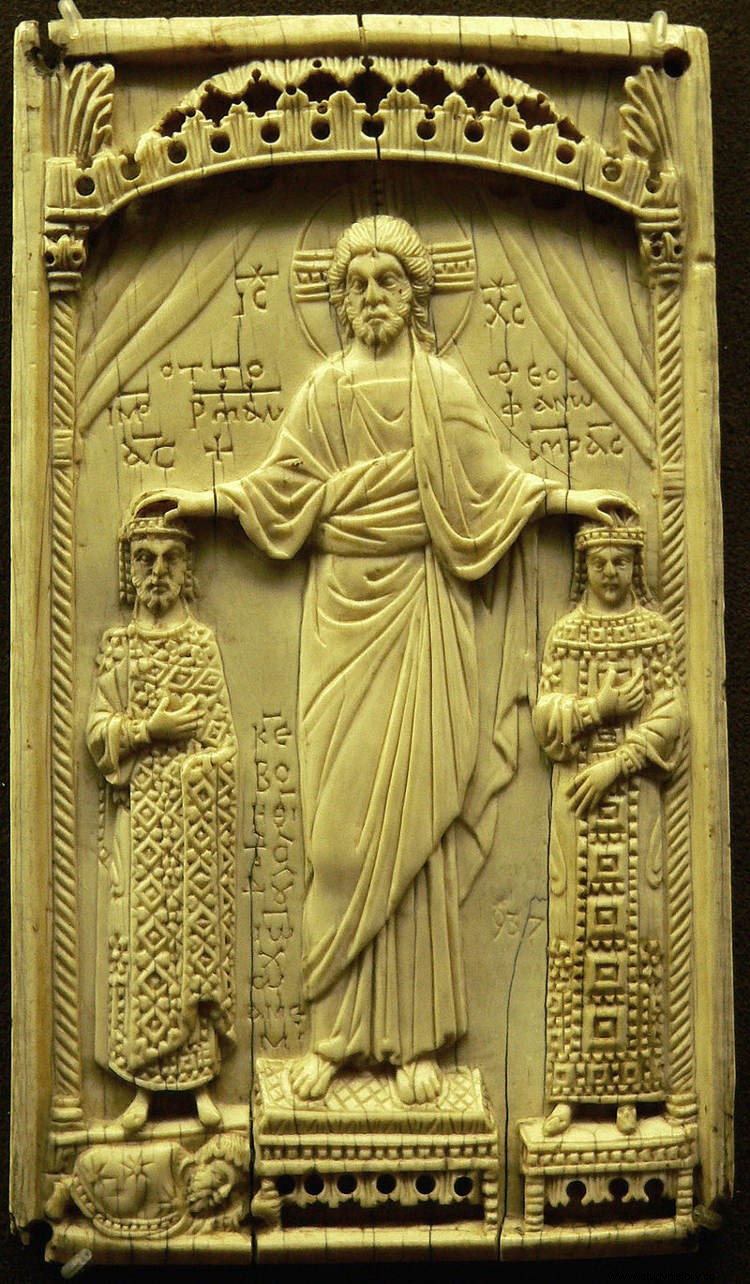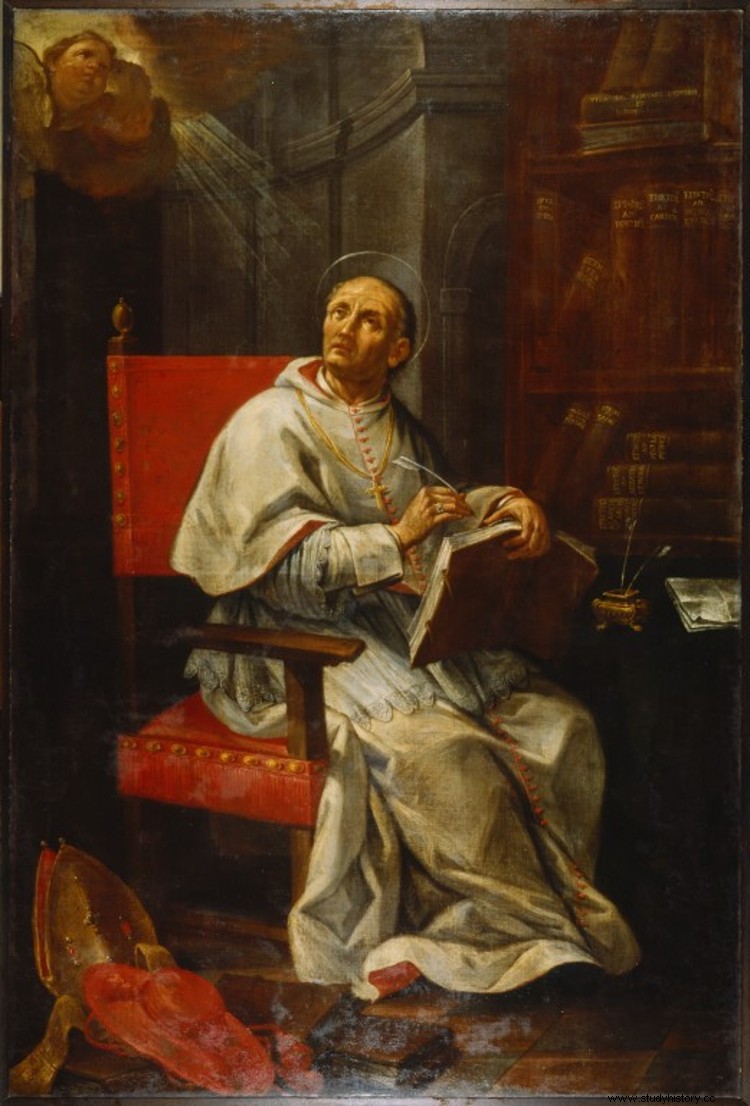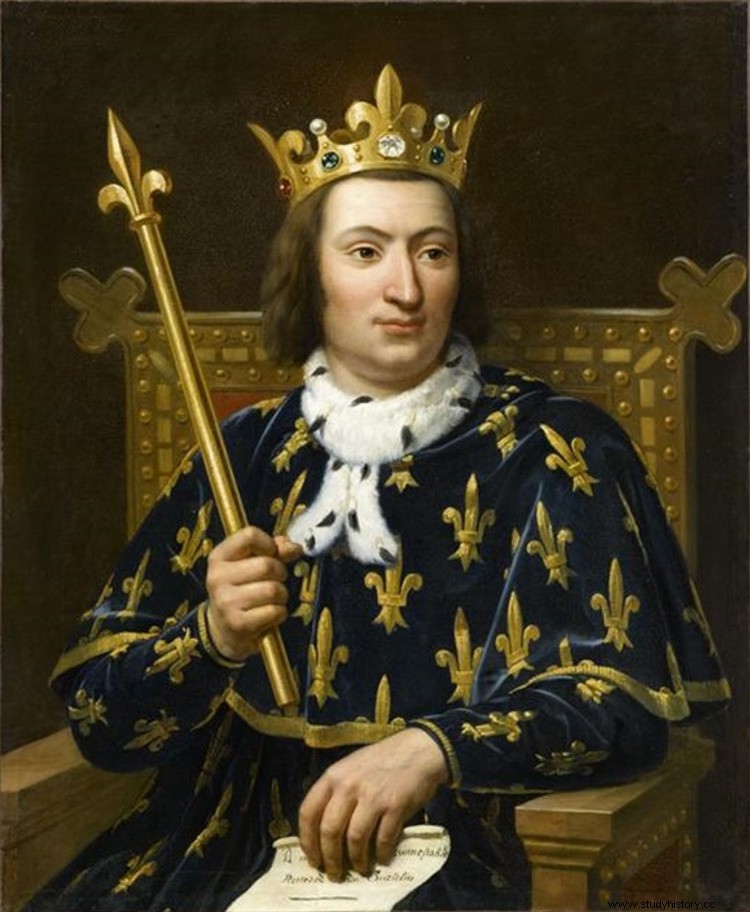A few years ago I was invited to dinner by some Bengali friends and when we sat down what was my surprise to see that there was a knife but no fork, despite the fact that the menu was based on rice and chicken. They used their hands to eat it and, because of where you go do what you see, I had to imitate them. In the West we are so used to the use of the fork that we assume that it has always accompanied us throughout history. However, it is not so; As we know it, it is a rather young, medieval cutlery whose beginnings were controversial as it was considered scandalous and not very masculine.
Obviously, it is such a basic type of instrument that its roots go back very far, even to Prehistory. In this sense, the oldest archaeological record is found in the Quija culture, which developed in the Chinese region of Gansu, around the Yellow River, during the Bronze Age (between 2400 and 1900 BC), where the pieces found were not metal but bone. In other sites of later dynasties such as the Shang (approximately a millennium later) and others, metal forks do appear, just as they are shown in funerary sculptural scenes of the Han era, in Shaanxi.
If we approach the Mediterranean world, closer geographically and culturally, we see that forks were also used in Pharaonic Egypt, although not so much for eating as for cooking. Now, we have a greater affinity with the Greek and Roman civilizations, in which this cutlery was commonly used; or instrument, to be exact, because as in the Egyptian case, its main use was in the kitchen or when serving dishes, mainly to carve meat.
They were manufactured in various metals, from bronze to silver, depending on the socioeconomic level of the user and the time, conserving quite a few copies. It was from the fourth century, in the Eastern Roman Empire, where they began to have a certain importance, first with the stiff palatial label that would be extended to the highest hierarchies and then spread among lower classes. From Constantinople, the use of the fork radiated outward in two directions:east and west.

The first leads to Persia, where in the 9th century the use of a cutlery called barjyn is reported.; Although it was initially limited to the most exquisite tables, in less than a century it had become widespread throughout the Middle East. The second saw its introduction to Western Europe at the hands of Theofania Skleraina, granddaughter of the Byzantine Emperor Nicephorus II and wife of Otto II, holder of the Holy Roman Empire (whom she succeeded to the throne as regent when she became a widow).
Theofania arrived in Rome to marry Otto carrying a colossal trousseau of hundreds of carts in which she loaded all kinds of sumptuary objects made of noble materials (ivory, ebony) and precious metals. Among them was the fork, with which he stunned the court by using it at the banquet he gave in the year 972. However, the truly curious thing was that this story was repeated shortly after with another character and this time the reaction was not limited to astonishment but voices arose against it from those who saw it as a raucous eccentricity.

Let us now place ourselves in the second half of the 11th century, when a Byzantine princess arrives in Italy again; she not to Rome but to Venice, although with the same nuptial purpose. This time it is about Teodora Ana Ducena, daughter of Emperor Constantino X Ducas and Eudoxia Macrembolitissa (the niece of Patriarch Miguel Cerulario) who is to marry the dux Domenico Selva. The wedding was celebrated in the year 1075 with the pomp and circumstance of her rank, something so excessive that the bride, who also displayed superb behavior, became unpopular from the start.
The stravaganza Theodora's Byzantine style was reflected not only in the colossal entourage she led or in the impressive diadem she wore at the ceremony (the one worn by her brother Michael VII, who had just inherited the imperial throne) but in her own daily behaviour, which it included such whims as bathing in the dew collected by his servants or - and here is what interests us - refusing to touch food with his hands, so that he used a golden fork to pierce the morsels previously cut for him by his eunuchs.

The ostentation of said fork was the straw that broke the camel's back and led San Pedro Damián to pronounce forceful criticism against it in his sermons, calling it an instrument of excessive delicacy and even devil's instrument . Or so the legend says, which is more than doubtful because Pedro Damian (or Pietro Damiani), a Benedictine priest who, after living as a hermit in an anchorite community, was called to Rome in 1045 to take charge of a reform of the Church, being appointed - to his regret - cardinal, died three years before Theodora's wedding. Thus, he could hardly make her the target of her diatribes, which have also been leveled against another princess, Maria Argyropoulina, for similar reasons, by marrying Giovanni Orseolo, son of the Doge Peter II.
But let's leave the Byzantine trail behind and follow that of the fork, which, despite all the reproaches, was here to stay. In Italy it was fully established and replaced the wooden fork that was used until then, since it only had two prongs and the three prongs on the fork proved to be more practical, especially when eating noodles and spaghetti. Of course, it was a very personal object, to the point that at banquets each guest was expected to bring their own. In fact, it became popular to carry it in a little box called a chain along with the spoon and that custom traveled to France, once again for a wedding.
It was the one that united Catherine de' Medici with Henry II, son and successor of Francis I, in 1533. Both were teenagers and when the Pope, the main supporter of the marriage, died the following year, the next one refused to pay the dowry, which meant Catherine's postponement in favor of a string of lovers. She consoled herself by patronizing artists and organizing picnics and picnics where she enforced the use of the fork, which, by the way, she also used to scratch her back. Thus, the cutlery became common in France in the 16th and 17th centuries, although it took time to displace the hand, both modalities coexisting, due to a prejudice stemming from a curious historical paradox.
In the second half of the fourteenth century, Charles V the Wise he had seen people eating with a fork in Venice, on his way back from a trip to Poland, and decided to introduce the use of it in France. After all, he liked to collect precious objects and it was he who specially embellished the Louvre Palace. Unfortunately, the sexual preferences of the monarch, who had several favorites in his court, meant that his fondness for cutlery was seen as another manifestation of his sexual taste and, consequently, he was abhorred.

They say that the need to extend the arm to save the large ruffs of lechuguilla, fashionable in the second half of the 16th century, was the decisive element for the change. In southern Europe it did not cost so much, perhaps because of contact with the classical tradition. The use of the two-pronged hairpin was common in Portugal, the latter country in which it was introduced towards the middle of the 15th century at the initiative of the Infanta Beatriz, the future mother of Manuel I. Surely the spread of the label had something to do with it. Italian, since at that time both in the Portuguese kingdom and in the Spanish there were numerous Genoese sailors and bankers, Venetians, etc.
The Hispanic Austrians, from Carlos V to Felipe IV, used forks sporadically and, in fact, before there was the so-called drill, which was a carving tool and whose description appears in the work Arte cisoria, or Treatise on the art of cutting the knife , written by Enrique de Villena in 1423:«The second has a trident, because it has three points, where the first has two; this one serves to have the meat that has to be cut, or something that has to be taken, firmer than with the first «. In the times of Felipe III the forks had different names, depending on the number of prongs:fork, bident, trident and quadrig. However, it would be necessary to wait until the beginning of the 19th century to see in these parts the fork as something normal on the tables and for it to begin to be manufactured industrially; in Barcelona for more details.
In contrast, in other places it was more difficult to establish, especially in northern Europe. Countries like England or Sweden saw the fork as something effeminate and in Denmark before Christian IV (who also reigned over Norway), the Church was stubbornly resistant, arguing that Christ ate with his hands. Likewise, we do not find the first English documentary review until 1611, in a book entitled Coryat’s Crudities hastily gobbled up in Five Months Travels in France, Italy, &c’, in which the author of it, the traveler Thomas Coryat, describes his passage through Italy:
Furcifer is a play on English words that derives from the expression fork-bearer , whose translation is fork bearer … but also scoundrel . News always raise suspicion.
